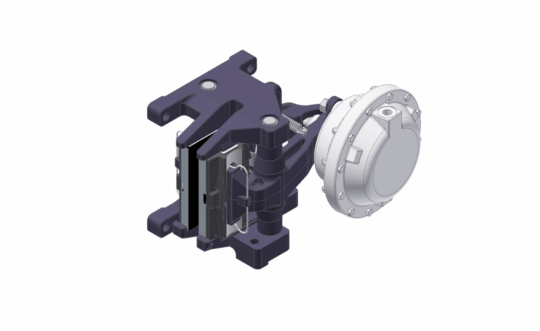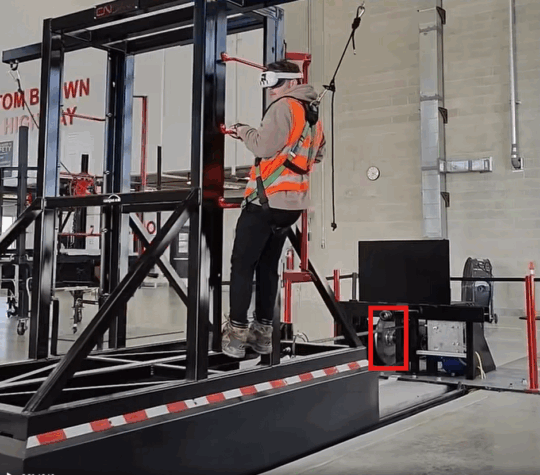Background:
An engineering firm approached Hindon to develop an industrial braking system for a railway employee training simulator. This simulator replicates the forces experienced from slack action during train operations like starts, stops, or dynamic braking.
Railway cars are not rigidly linked. Instead, their connections have a small amount of slack to aid in navigating curves and elevation changes. This slack also facilitates initial acceleration by allowing each car’s load to be added sequentially, rather than the train pulling its entire weight from rest simultaneously.
However, this lack of rigidity can lead to slack action, causing abrupt jerking of individual railcars. Slack action poses a safety hazard, as it can cause rail workers to lose their grip and fall from the train. The simulator allows employees to practice experiencing these sudden jolts before working on a real train, enhancing safety.
In support of the railway end user, the customer required a pneumatic industrial braking solution that would enable them to recreate this slack action in a training environment. To achieve this, the customer was searching for a braking system that would slow their ~3,500lb railway simulator carriage from 10mph to a full stop to induce approximately 1.6 lateral Gs on the carriage. The ability to fine-tune deceleration and accurately represent train slack action in the field was a key requirement for the end-user, who needed a range of braking torque adjustability to achieve this.
Application Challenges:
- 6-week timeframe to engineer and provide the braking solution including pneumatic disc brake and brake disc/hub assembly
- Limited space in the application for a large brake disc
Solution:
After evaluating the technical data and consulting with the customer about the industrial braking system’s requirements, Hindon supplied a complete pneumatically applied disc braking system, featuring a 24-inch diameter by 1-inch thick brake disc. Properly sized pneumatically-applied braking systems can provide robust performance cost-effectively for applications where fail-safe operation (i.e., ability to stop/hold in the event of power loss) is not a requirement.

Pneumatically applied brakes are recognized for their simple, compact design that combines performance with ease of maintenance in a cost-effective solution.
Hindon’s system delivered up to 7.2 kNm torque, fully adjustable via input air pressure. The brake’s torque adjustability allowed the end user to fine-tune the lateral G-force experienced by trainees, anywhere from 0-1.6G, providing a realistic and optimal training experience on the simulator.

The slack action simulator in action, with brake disc outlined bottom right.
Hindon’s braking system enabled the end user to provide an optimal training simulator for new hires. This controlled learning environment properly prepared them for real-world applications, significantly minimizing safety risks once the trainees transitioned to fieldwork, as the simulated scenarios allowed for repeated practice without the dangers present in live operations.